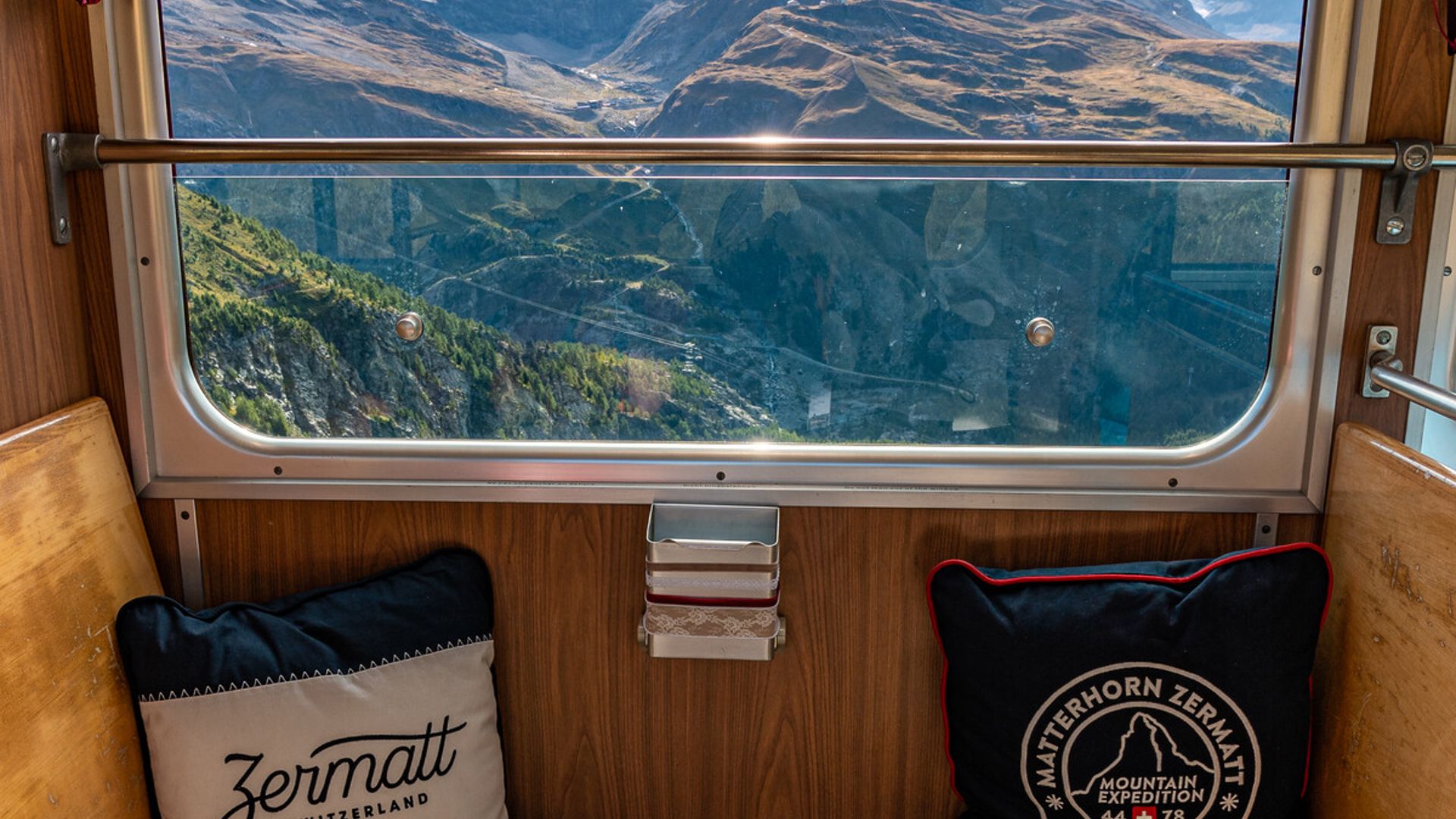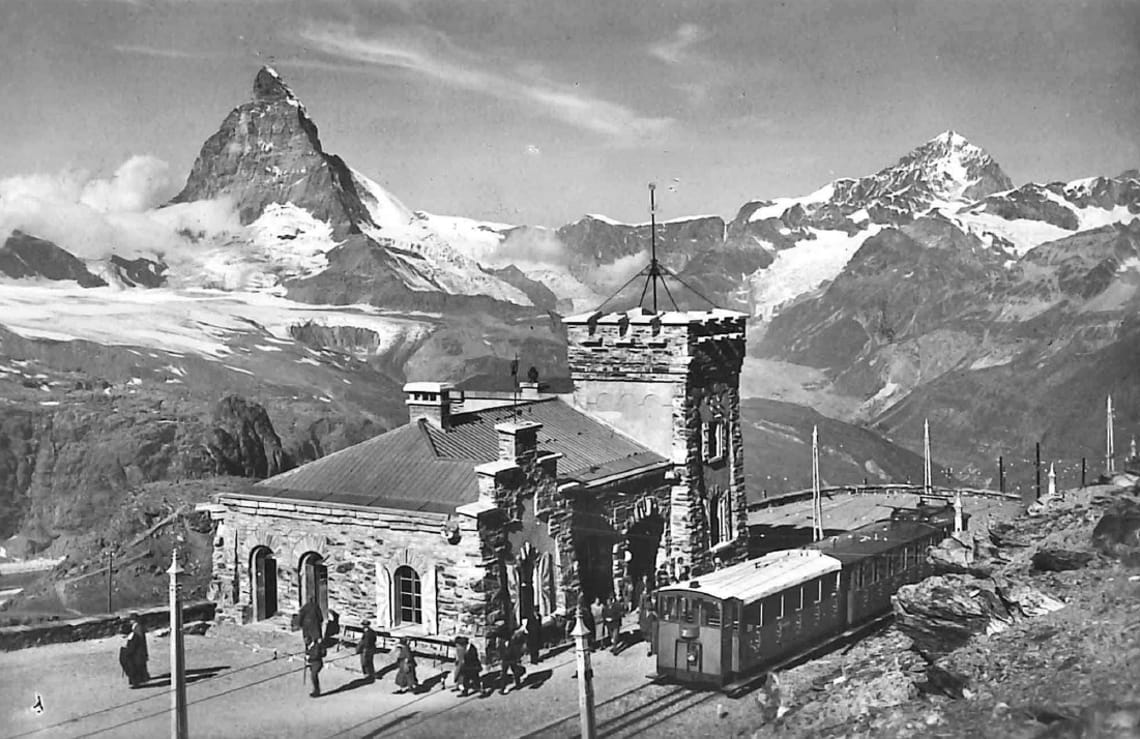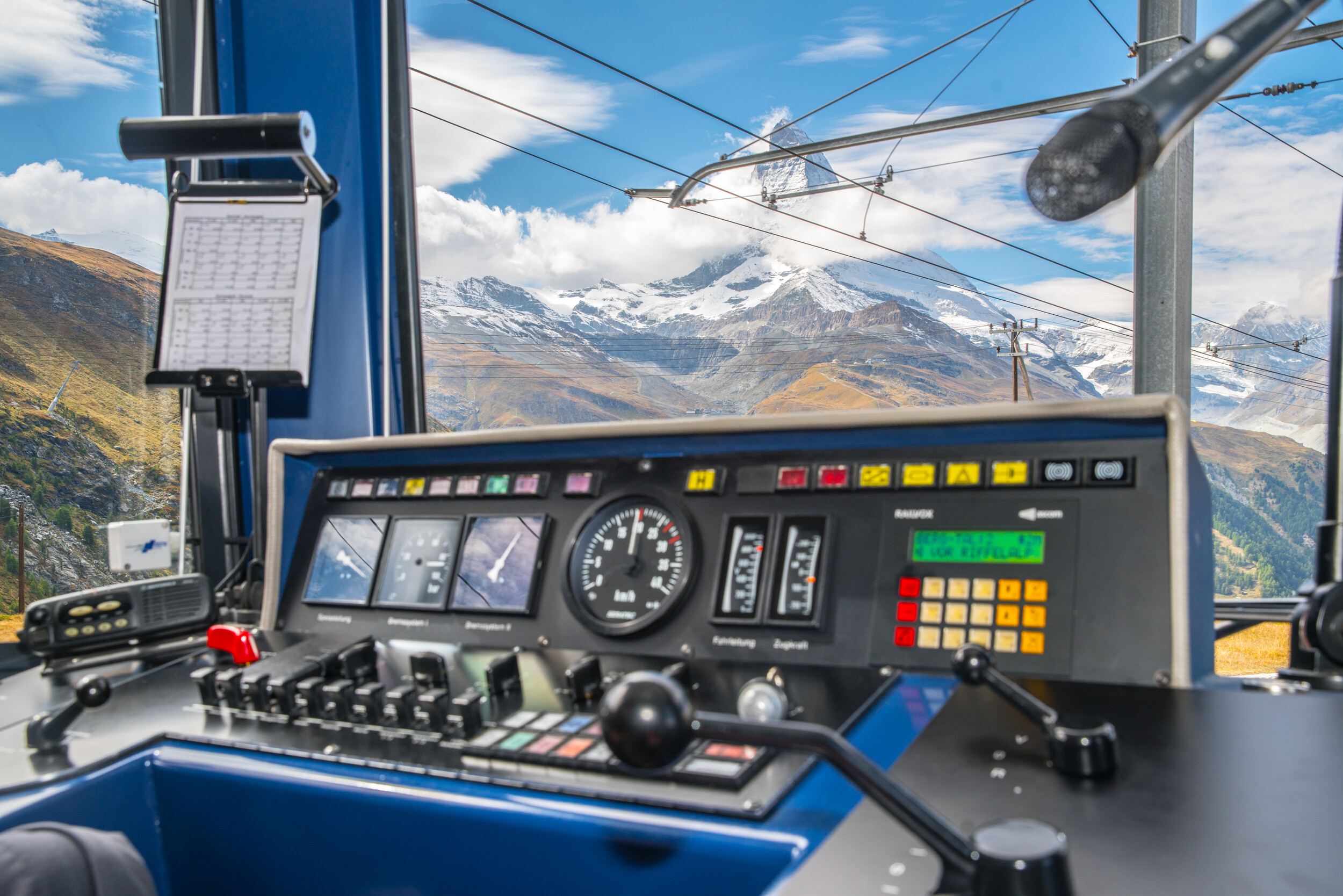History of the Gornergrat Bahn
From 1898 until today
The Gornergrat with its idyllic forests, alpine meadows and mountain lakes, has always been a place to dream.
First electric cogwheel train in Switzerland
Tourism began to develop even before the Gornergrat railway was built. At that time, people climbed the panoramic mountain opposite the Matterhorn on foot. The history of the 9,339-metre-long railway line from Zermatt to the Gornergrat began with the approval for the construction works in 1892. The construction project was approved as a cogwheel railway with a maximum gradient of 20 per cent and electric operation.
Construction could only take place during the summer months, between the melting of the snow and the onset of winter. It is therefore even more impressive that the railway was opened on 20 August 1898 after only two years of construction.
More than 2400 workers, mostly from Italy, worked on the mountain construction site. At peak times, a thousand workers were at work at the same time. Switzerland's first electric cogwheel railway was equipped with the rack-and-pinion system designed by engineer Roman Abt, a system still in use today.
Launch of winter sports in Zermatt
In the beginning, the Gornergrat Railway could only be operated in the summer due to the various dangers existing in the winter. When the railway travelled to the Riffelalp station for the first time in the winter as well during the 1928/29 season, it enabled the first winter sports season to take place in Zermatt.
The prosperity of the village at the foot of the Matterhorn increased rapidly as a result, and with the extension of the winter route to Riffelberg, a further ski region was opened in 1938. After a 770-metre-long avalanche gallery was installed on the Riffelbord, the railway was finally able to travel to the Gornergrat terminal station during the winter of 1942/43. Just eight years later, the operating frequencies of the winter routes had exceeded those of the summer.
Ongoing expansion
The mountain station of the Gornergrat Railway was first located about 71 metres below the current spot. It was only with the demolition of the old Kulmhotel in 1909 that sufficient space was created for the station to be relocated to an altitude of 3089 metres. After World War II, the Gornergrat Railway purchased several new railcars due to increasing numbers of passengers. The renovation of the Zermatt railway station in the 1960s further increased capacity as six trains could now be dispatched at the same time.
During this time, the Gornergrat Railway had also expanded the line between Riffelberg and Gifthüttli. The railway’s original top speed of 7.2 km/h was increased to 14.5 km/h in 1965 thanks to new locomotives, and since 1993 it has been able to achieve 28 km/h while travelling uphill and 15.5 to 21 km/h downhill.
Since 2008, the route has only taken 28 minutes to cover compared to 42 minutes previously. As if that were not enough, the attractiveness of the Gornergrat and the railway is being expanded on an ongoing basis. Since the opening of the Gornergrat Bahn, it has been running in an energy-saving way. Thanks to so-called recuperation, energy can be recovered during the descent and fed back into the grid.
Integration into BVZ Holding
In 1997, the Gornergrat Railway was renamed the Gornergrat Monte Rosa Bahnen – a decision which was then later reversed at the Annual General Meeting in April 2005. In October of the same year, the integration of the railway into BVZ Holding was approved. Together with the Glacier Express, it became the most important element of the BVZ Group in the area of adventure travel. After the Jungfrau Railway, the Gornergrat Railway is the second-highest mountain railway in Europe and with its breathtaking viewing platform at 3131 metres above sea level, the Gornergrat is a popular excursion destination for both Swiss and international tourists. Surrounded by 29 peaks soaring over 4000 metres in height – one of which is the Matterhorn – it offers a stunning panoramic view of the Alps.




.jpg?fm=jpg&fl=progressive&f=center&fit=fill&q=45&w=1920)